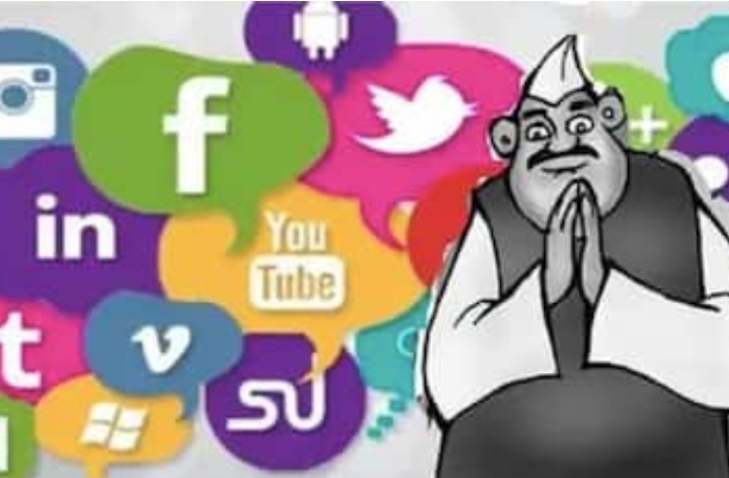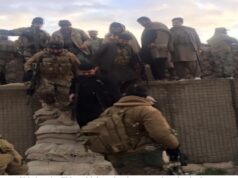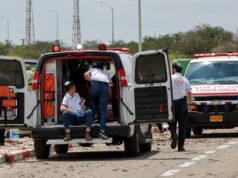Bihar Elections Will Lead the Way for Digital-First Polls in India: Here’s How It Can Work
 With Covid-19 pushing new protocol to follow for everyone, election campaigns are set to go digital first in India for the first time, turning over a new chapter altogether.
With Covid-19 pushing new protocol to follow for everyone, election campaigns are set to go digital first in India for the first time, turning over a new chapter altogether.
The year was 1995 – last elections of undivided Bihar, where the newly-formed Samta Party projected Nitish Kumar as the next Chief Minister of Bihar for the first time. At the peak of Lalu Raj, all such claims were swept away. But, the month leading up to the elections was marked with festivities – competitive Helicopter spotting and election rallies being camouflaged into village fairs replete with balloon sellers, jalebi hawkers and peanut joints. I – not a voter then – was extra well-behaved at home to make sure father took me to see the chopper fair.
Elections in India has been much more than a mechanical process of using the Universal Adult Franchise. Rather, it is seen as the celebration of people-to-people contact, and hence often called the ‘Dance of Democracy’ – with car and bike rallies, long marches and public meetings where lakhs gather to listen to their leaders. It also gives the economy a boost, with two-wheelers, festoon, merchandise sales and event management demand surging.
The upcoming Bihar elections, where Nitish Kumar is vying for a record fourth term, was promising much of the same. Then, the Coronavirus pandemic made its pervasive impact felt. The very people-to-people contact, which was cherished during the polls, have now become the biggest villain.
With our Election Commission making it clear that as of now they have no plans to postpone the elections, technology is set to take on a greater role. Not just in voter awareness and the polling process – for the first time probably, election campaigns would go majorly digital-first.
Naresh Arora, political strategist and founder of Designboxed, says that technology was anyway playing a major role in electioneering, and the pandemic has now made it all the more imperative for political parties. With this, while the festival flavour will go out of electioneering, it would also make the process less interfering with other walks of life.
India has over 400 million smartphone users and more than 450 million feature phone users, according to the International Data Corporation. This market has seen a significant jump away from feature phones in the past three years. So, what in digital would be the best medium to cash in and reach more Indians?
According to Gopa Kumar, COO, Isobar India, a global digital marketing agency, “All Social Platforms will play a major role and will help to bridge the gap between voters and candidates. Facebook, TikTok, Helo, ShareChat, WhatsApp – all of these are popular platforms where the people engage and spend time.”
But given the fact that WhatsApp is the only communication platform which is available in both smartphones and some feature phones, it would undoubtedly emerge as the biggest tool for communication.
Advertisement spends are likely to rise, too. Money that would have been used in other campaigns will instead be poured in on digital spends. Arora says, “Twitter and Google will also have to reconsider their policy of not allowing political advertisement. If ads on TV and newspapers are allowed, why restrict social media advertisements? Until they reconsider this, Facebook will dominate the ad spends.”
Case in point is the high-voltage West Bengal polls, likely to be held in April-May next year. Prashant Kishore-led Ipac, which is managing the elections for Mamata Banerjee’s Trinamool Congress, has already mapped the digital penetration of the state and moved a number of campaigns to digital. Sources in the team say one such success is “Didi Ke Bolo” (Tell Didi). Even during lockdown, this team was active, getting daily calls about difficulties faced by the people and trying to connect them to the correct authorities.
The team also got MLAs and party leaders to conduct virtual press conferences in all districts of the state. This, they claim, will help the party stay in touch with the public in these trying times. BJP too held a massive digital rally in the state, which was addressed by the former party president and Home Minister, Amit Shah.
As WhatsApp, Facebook and YouTube have the highest penetration in the state with 3 crore, 2.5 crore and 2.65 crore active users respectively, these would be the obvious chosen platform for campaigning in West Bengal, which has a population of 9.7 crore.
While Bihar has traditionally been considered a backward state, it saw the highest percentage of internet growth in India in 2019. Explaining this, Kumar says, “Ever Since Jio happened, it has helped democratise the internet and made it mainstream for all. Also, many reports suggest that Bihar registered the highest growth in internet users across both urban and rural areas, registering a growth of 35 percent over last year.”
This ICUBE report also says that the internet usage is more gender-balanced than ever before with women comprising 42 percent of total internet users. All this makes digital a very credible and impactful medium for these elections.”
No wonder, then, that political parties have already begun digital campaigns.
BJP, which in alliance with Nitish Kumar’s Janata Dal (United) was the first one off the block, with Home Minister Amit Shah holding a virtual Bihar rally from Delhi. But will it have the same impact as physical rallies?
Amit Malviya, in-charge of BJP’s Information Technology department, feels, “Digital rallies can never replace the physical ones, and even in the wake of the pandemic, there is scope for small, personalised meetings while maintaining social distancing.” He feels that BJP being a cadre-based party has the maximum advantage.
According to a news report from April, published by The Guardian, millions of people in South Korea, wearing masks and standing at least one metre apart, moved slowly between lines of duct tape at polling stations. This was probably the first national election post Coronavirus.
Before casting a vote, everybody underwent mandatory temperature check, sanitised their hands and used disposable plastic gloves. The election officials too were in masks and maintained social distancing norms. About 13,000 people under self-quarantine due to the virus were allowed to cast ballots immediately after the polls closed, provided they had no symptoms. This shows that digital campaigning can also urge individuals to come out and vote.
On this note, BJP’s Malviya points out that the immense following that Prime Minister Narendra Modi has on various social platforms will be of great help to the party. He points out the response that the country gave to PM Modi’s televised speech during the Coronavirus induced lockdown, to show how support can be galvanised digitally.
Professor Manoj Jha, member of Rajya Sabha from Bihar’s main opposition party RJD, believes the success of this election will have to be in a decentralised campaign, and RJD is already doing that to reach the most basic unit level.
Jha says, “The campaign would go mobile, with WhatsApp and TikTok being the main campaign tools. Facebook and YouTube videos would also be used to communicate with people.”
He too maintains that the old methods of campaigning, like door-to-door outreach and small gatherings, would play a rather important role, at least for now.
All said and done, the rise in digital campaigning will also see a rise in fake news. So far, efforts of global tech giants and the Election Commission have been minimal when compared to the might of the fake news factory. Will a more pronounced digital campaign create a greater post-truth machinery, then?




